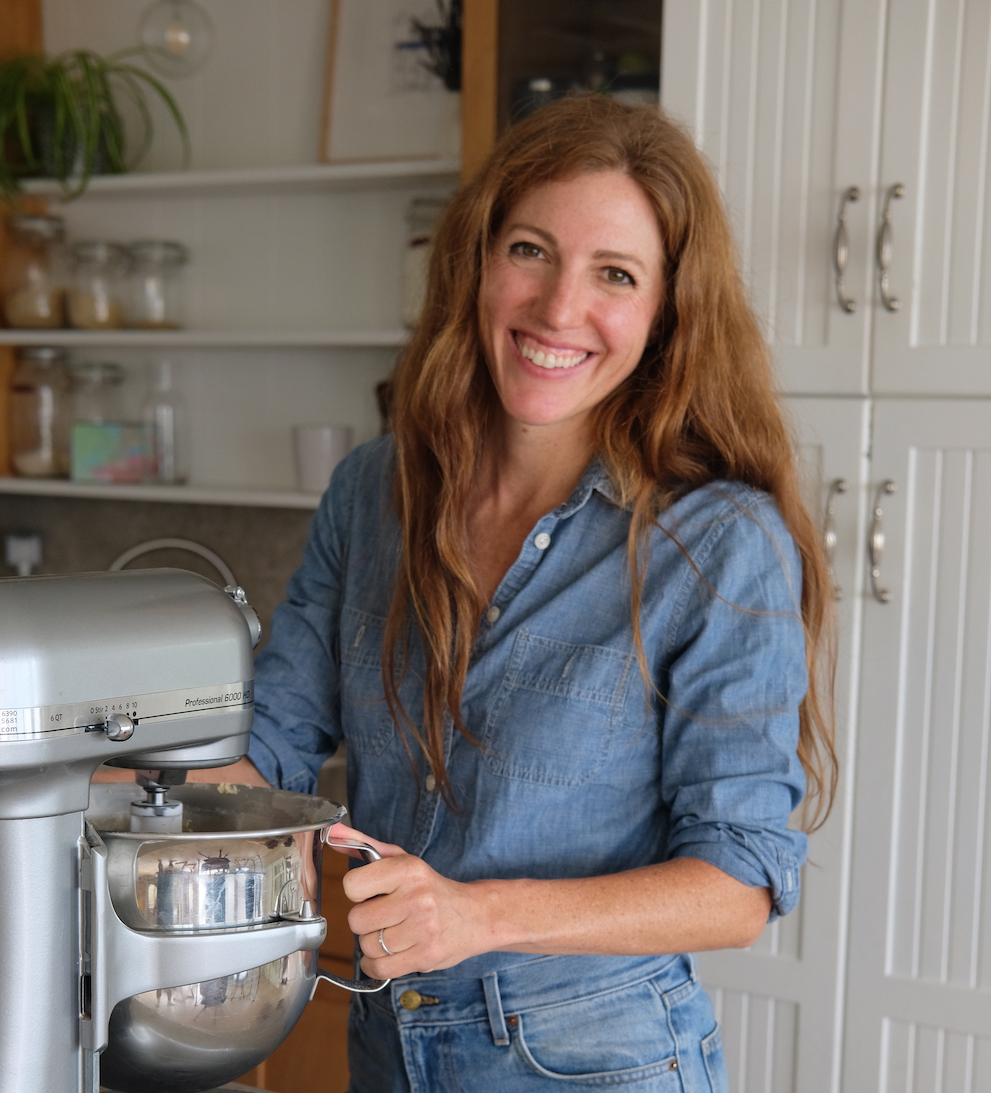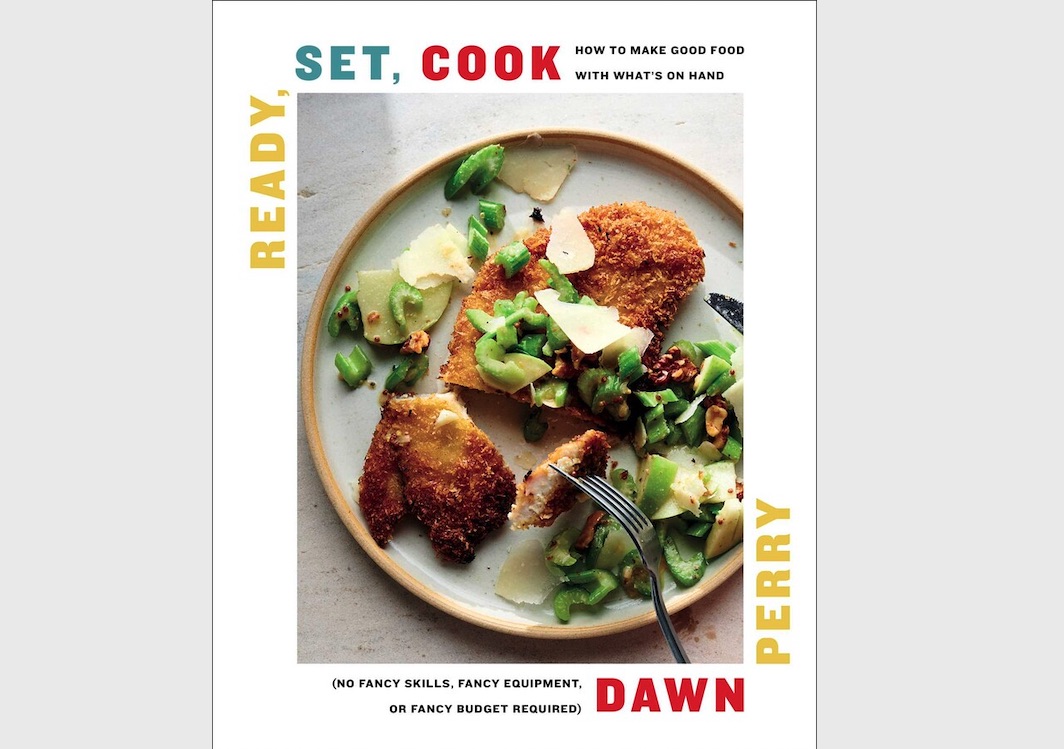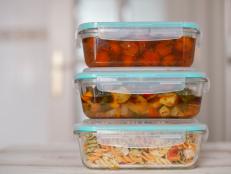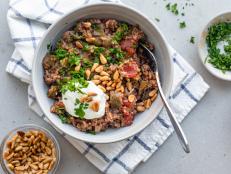7 Habits to Help You Make Dinner Without Planning At All, According to a Recipe Developer
The art of improvisation in the kitchen can absolutely be learned if you reframe how you look at your pantry. Plus, three recipes for go-with-anything sauces that turn any ingredients into a meal.

Get the recipe: Creamy Dressings from Ready, Set, Cook
For the past twelve years or so I have spent the bulk of my professional time writing recipes for busy working people, myself included. Focused on dinner solutions, I made promises about 30-minute meals, aimed to dirty as few dishes as possible, and put melted cheese and tomato sauce on enough things that I thought the kids might, at the very least, taste what I was selling.
Those solutions are all great on paper but they can only get you so far when you get home, tired and hungry, and faced with the task of putting together another meal you hope everyone might like.
A lot of people will tell you it’s all about meal prep. You make A, B, and C on Sunday and then reinvent them throughout the week. Which is great in theory, but I’m not interested in spending a whole Sunday in the kitchen chopping and simmering and packaging meals for the week ahead. Plus, rare are the times when whatever I had intended to eat on Wednesday still seemed appealing when hump day finally arrived.
I say forget meal planning. Instead, I exercise these habits to help make weeknight meals so easy it hardly feels like cooking at all. (And read even more of my tricks and recipe ideas, in my brand new cookbook, Ready, Set, Cook.)
I stock the pantry with versatile hard-working staples I know can do a lot.
I think of my base pantry the same way I do kitchen equipment: I try to avoid anything that can only do one thing (looking at you, cherry pitter and ghost pepper hot sauce). Instead I focus on more obvious items (flour, olive oil, pasta, salt) as well as the slightly less so (dried fruit, chilies, soy sauce). The important thing is that every one of my base pantry ingredients can do a lot. Flour, for example, can be kneaded into biscuits to serve alongside simply seared fish or act as the secret ingredient that turns chicken stock into a silky sauce for chicken piccata.
I keep food on hand that my family and I actually like eating.
If the first step in cooking without a plan is keeping food in the house, the second is keeping food you actually like in the house. Seems obvious, right? But you'd be surprised how much stuff is in the fridge and cupboards that you never use or that you don't like eating. Be honest with yourself about what you like and what you’ll eat in a reasonable amount of time (mind those expiration dates). Buy in smaller quantities (single serving cottage cheese is the right move for me) and double down on stuff you know you and your family will go through quickly. Pasta is a sure thing for us, so I always keep a variety of shapes around. Same goes with fresh items: carrots and cucumbers are my kids’ favorites for my kids so I keep them both around all the time knowing I can roast, smash or simply serve them raw with a bit of dip.
I get organized…
I am not, by nature, a super-organized person, but as one gets older and adopts more responsibility (or has more children), it becomes an imperative. Some of the “rules” I set for myself are really just a gentle reminder to K.I.S.S. (Keep it simple, um, sweetheart). But these are the big ones:
Keep like with like. Canned goods stack neatly on top of one another; bags and bulky items nest nicely on low shelves and so on. You’ll save time looking for things because it will be obvious where they’re kept. Same goes when you’re shopping for groceries. Does the thing come in a can? Look near the other cans. Box-shaped? Head toward the cracker and cereal aisle.
And avoid overflow. Unless you are serving a bunch of endurance athletes on a regular basis I would eschew auxiliary storage. This seems to encourage hoarding and keeps you from taking a hard look at what you’re really cooking and eating. If food is out of sight (in that fridge in the garage, for example) it’s probably out of mind. If you can see it, you’re more likely to be inspired to eat it.

…but I don’t fret about organizing.
I don’t like to get too prescriptive when it comes to pantry storage and organization because every kitchen situation is different and life circumstances change. I used to say “don’t decant!” but in my current kitchen it makes more sense to keep grains on the open shelf above the sink than it does to store them behind closed doors. It encourages me to actually cook and eat them, too.
Most importantly, do your best to store things properly which, unless we’re talking about a delicately frosted cake, almost always means in an airtight container; in the fridge if perishable. I like clear containers so I don’t have to open them up to see what’s inside. I label items including the date I made them so I can keep track of my deadlines and do my best to abide by the old adage “first in, first out”.
Check in now and again.
Once a week, or whenever you think about it, give the fridge and freezer a once-over. Plan to cook ingredients on their last legs ASAP and throw away or compost anything past its prime. You’ll start to recognize patterns and, for me, the guilt of throwing away unused food is enough to keep me from buying or making anything I just won’t use. Plus it makes deciding what to have for dinner an easy decision.
I keep a lean cache of equipment.
Digging around for tools and equipment can be a real time-suck. You don’t need a lot of stuff, just the right stuff and that varies depending on what you tend to cook most. For me it’s a few sharp knives — chef’s, paring, serrated — a cast iron skillet, and a few rimmed baking sheets. Beyond that a spatula, wooden spoon, and tongs are the handheld pieces I reach for most. I keep these oft-used items within easy reach. It’s an old restaurant kitchen trick that encourages an economy of movement in tight spaces. Haven’t used that electric griddle in six months? Probably OK to donate it. Unless, of course, it’s seasonally specific — in which case, find a spot to stash that bee-hive shaped bundt pan until next spring.

Get the recipe: Garlic-Shallot Crunch from Ready, Set, Cook
I supplement my arsenal with homemade staples I call Pantry+ ingredients.
Making just a few homemade staples each week will deliver big craveable flavors without a ton of effort. To clarify, this isn’t meal prep. This is keeping jazzy extras in the rotation. I like to keep at least one crunchy thing on hand for topping (croutons, toasted nuts, or Garlic-Shallot Crunch) and one dressing or sauce (a versatile Creamy Dressing or a zesty spoonable number I call Zing! Sauce — all recipes from Ready, Set, Cook!). They make even your laziest scrambled eggs, grilled chicken breast or roasted veggies really sing. And they do wonders for leftovers. They are my secret weapons for keeping my old standbys from getting boring, too.
Like all new habits, it may take awhile for these to stick so go easy on yourself. Focus on one thing at a time, and slowly crowd out some of your, say, less desirable cooking or shopping habits in favor of more reliable and delicious ones. My advice? Start with the Zing! Sauce.
Related Links:

































